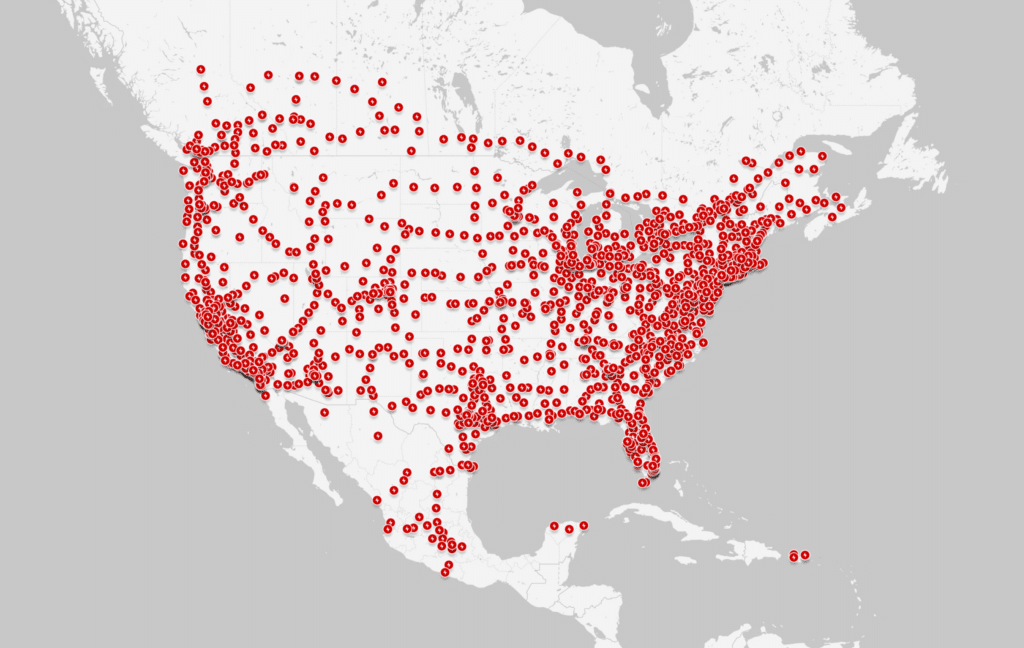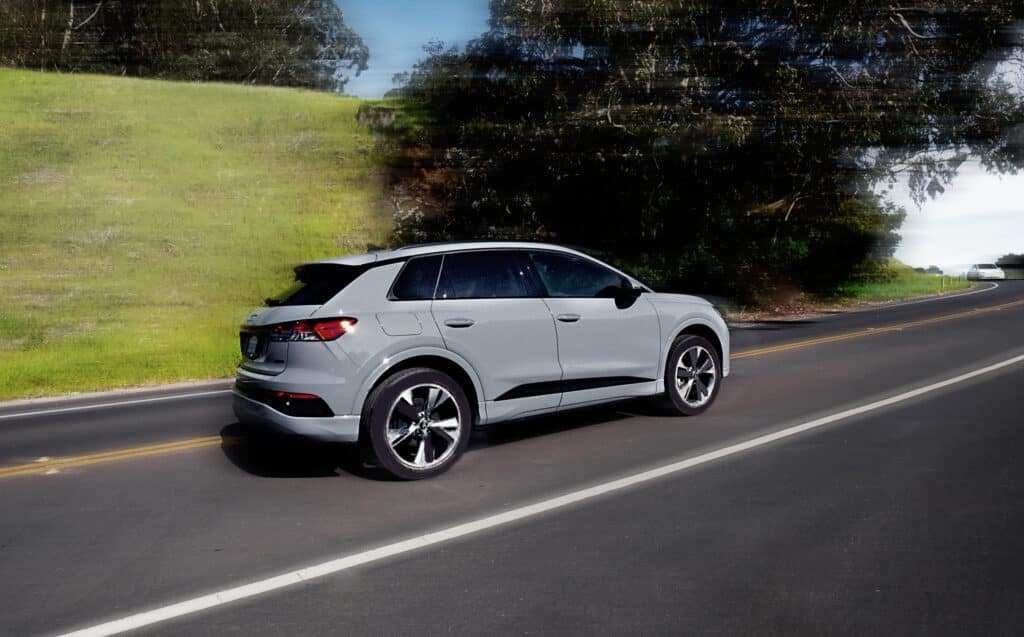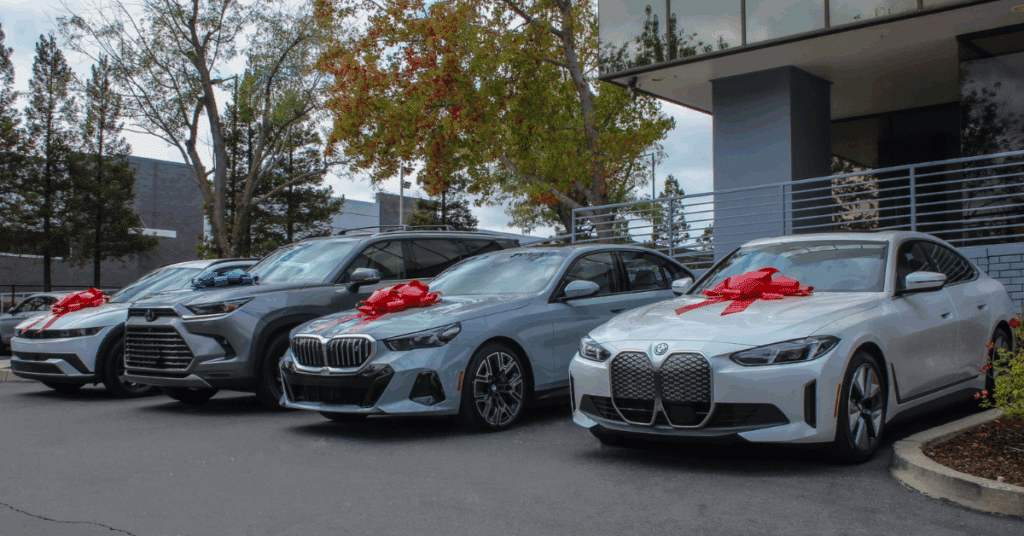As the electric vehicle (EV) market continues to grow, charging infrastructure remains a critical component for mass adoption. Tesla is expanding its Supercharger network and introducing its North American Charging Standard (NACS) to other automakers. This shift aims to unify the fragmented EV charging landscape and make charging as convenient as refueling a gas-powered car. Here’s everything you need to know about Tesla’s charging network, the automakers joining the NACS movement, and what it means for EV drivers.
The Evolution of Charging Standards
Unlike traditional gas stations, EV charging stations currently use different types of connectors, such as CHAdeMO, the Combined Charging System (CCS), and Tesla’s proprietary NACS. Among these, Tesla’s NACS stands out for its smaller size, ease of use, and reliability. Recognized as the gold standard in EV charging, Tesla’s Supercharger network is extensive, with over 20,000 V3 Superchargers in the U.S. alone.
In May 2023, Ford became the first automaker to adopt Tesla’s NACS, triggering a domino effect. Since then, major automakers, including General Motors (GM), Hyundai, and BMW, have announced plans to integrate NACS into their EVs. The Society of Automotive Engineers (SAE) is also working to certify NACS as a national standard, further cementing Tesla’s influence on the industry.
Automakers Embracing Tesla’s Charging Network
The following automakers have agreed to adopt NACS and offer adapters for older models with CCS ports:
- Audi: From late 2025, Audi’s EVs will feature NACS ports, with adapters available for older models.
- BMW: BMW, Mini, and Rolls-Royce will include NACS ports starting in 2025. An in-car app will streamline charging and navigation to Tesla stations.
- Ford: Current Ford EVs, like the Mustang Mach-E and F-150 Lightning, already use Tesla’s network via adapters. By 2025, new models will feature built-in NACS ports.
- Hyundai: The 2025 Hyundai Ioniq 5 will be the first U.S. model with a built-in NACS port, with adapters available for older vehicles.
- GM: GM’s EVs will include NACS ports starting in 2025, with adapters already available for CCS-equipped models.
- Mercedes-Benz: Starting February 2025, Mercedes EVs can access Tesla’s Superchargers via adapters. Future models will include NACS ports.
- Polestar and Volvo: Both brands will integrate NACS by 2025, offering adapters for CCS ports.
- Nissan: Nissan will introduce NACS ports for its EVs in 2025, starting with the Ariya.
- Volkswagen: VW’s 2025 models will feature NACS ports, with adapters for older models planned.
Other brands, including Genesis, Lexus, Mazda, Rivian, Porsche, and Lucid, have also announced plans to adopt NACS, signaling a widespread industry shift.
Tesla’s Supercharger Expansion
Tesla is gradually opening its Supercharger network to non-Tesla EVs. Currently, six brands—Ford, Rivian, GM, Polestar, Volvo, and Nissan—can access select stations. Mercedes-Benz will join in February 2025, with other automakers following throughout the year. By summer 2025, most major brands will have full access.
However, not all Supercharger stations are included. Tesla has restricted access to some locations, particularly in dense urban areas or stations that lack the necessary hardware and software upgrades. Additionally, Tesla may charge non-Tesla drivers higher fees unless they subscribe to a $12.99/month Supercharger membership, which offers Tesla-equivalent rates.

Key Benefits of NACS Adoption
- Convenience: Tesla’s extensive network ensures reliable charging for road trips and daily commutes.
- Simplified Standards: By adopting NACS, automakers eliminate the confusion of multiple charging standards.
- Future-Proofing: Starting in 2025, all new EVs from participating automakers will include NACS ports, removing the need for adapters.
Challenges and Considerations
While the transition to a unified charging network is promising, it comes with challenges:
- Adapter Availability: Early adopters faced delays in securing adapters, though the situation is improving.
- Station Compatibility: Tesla’s cables are designed for its vehicles, which may require non-Tesla drivers to reposition their cars, potentially blocking other spots.
- Urban Access: In high-density areas, the availability of Supercharger spots for non-Tesla vehicles remains limited.
Despite these hurdles, the move to NACS is a significant step forward for the EV industry, paving the way for greater adoption and convenience.
The Bigger Picture: Tesla’s Role in EV Infrastructure
Tesla’s push for NACS dominance began in November 2022 when it published the connector’s manufacturing specs and invited other automakers to adopt it. The argument was clear: NACS is smaller, more user-friendly, and more reliable than CCS. With Superchargers accounting for a third of the 60,000 public fast chargers in the U.S., Tesla’s influence is undeniable.
Charging companies like ChargePoint, Electrify America, and Blink have also announced plans to add NACS connectors to their stations, ensuring compatibility across networks. The SAE’s certification of NACS as SAE J3400 will further standardize the connector, making it the de facto charging solution in North America.
Why This Matters for EV Adoption
Access to Tesla’s Supercharger network is a game-changer for drivers, especially those without home-charging options. Apartment dwellers and urban residents will benefit from more reliable public charging, making EV ownership more practical. Additionally, the rollout of V3 Superchargers—the fastest and most powerful in Tesla’s network—ensures quick and efficient charging experiences.
Cartelligent’s Perspective
At Cartelligent, we see Tesla’s Supercharger expansion and the adoption of NACS as monumental steps toward simplifying EV ownership. As the industry moves toward a unified charging standard, now is the perfect time to explore your EV options. Whether you’re considering your first electric car or upgrading to the latest model, Cartelligent can help you navigate the process seamlessly.
From comparing vehicles to understanding incentives and rebates, we’re here to make your transition to an electric future effortless. Contact us today to get started and take full advantage of the growing Tesla Supercharger network!





